Essential PE Teaching Resources for Young Learners
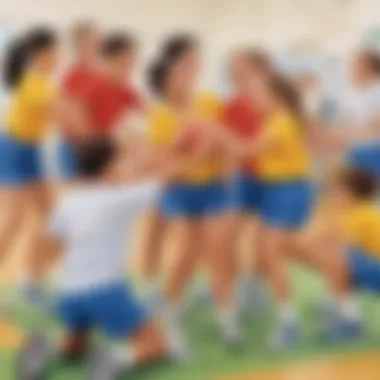
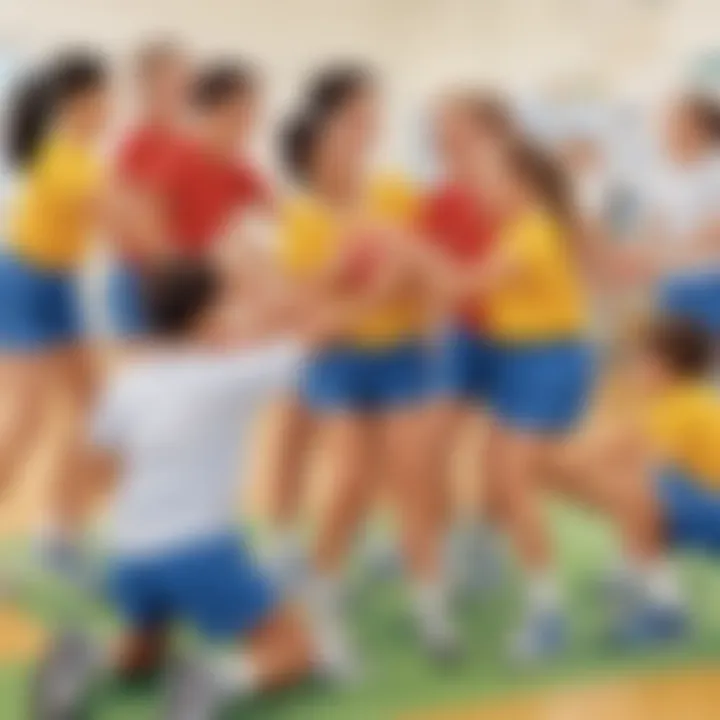
Intro
In a rapidly changing world, equipping our children with tools for holistic development has never been more crucial. Physical Education (PE) serves as a cornerstone for not just physical fitness but also mental and social growth. For kids aged 3-12, a structured yet lively approach to learning movement can lay the groundwork for lifelong healthy habits.
Physical Education does far more than promote fitness; it fosters social skills, emotional balance, and cognitive development. In these formative years, children are like sponges, soaking up everything around them. So, introducing them to enriching PE teaching resources can elevate their learning experiences dramatically.
This guide will explore an array of innovative resources, from interactive games to hands-on projects, aiming to cultivate a fun and engaging environment. By tapping into these invaluable materials, educators and caregivers can enhance not just physical capabilities but also critical thinking, teamwork, and creativity in young learners.
Understanding the Importance of Physical Education
Physical education (PE) plays a crucial role in the holistic development of children. It's not just about running laps or playing games; it encompasses a wide array of physical experiences that lay the groundwork for a healthy lifestyle. In this article, we will explore different aspects underscoring the significance of PE, demonstrating why it should occupy a central spot in educational curricula.
Physical Literacy Defined
Physical literacy involves more than just being good at sports. It refers to the ability of children to engage in physical activities with competence and confidence. Think of it as a set of skills that allows kids to navigate different movement challenges. From climbing trees to riding bicycles, these fundamental skills can provide children with the foundation they need for lifelong physical activity. Cultivating physical literacy equips learners to participate fully in their communities and promotes a sense of ownership over their health.
Benefits of PE for Children
Enhancing Physical Health
One significant advantage of physical education is its role in enhancing physical health. Regular participation in PE classes helps combat sedentary lifestyles, which are becoming alarmingly common among children. By introducing consistent movement, children can improve cardiovascular fitness, develop strength, and boost overall stamina. This improvement in physical health not only contributes to a fitter body but also lays the groundwork for lifelong healthy habits. When children become accustomed to physical activity in their formative years, they are likely to carry these habits into adulthood, reducing the risk of obesity, diabetes, and other health issues down the line.
Building Social Skills
Another notable benefit of PE is its potential to build social skills. In a PE environment, children often engage in teamwork, collaboration, and conflict resolution. Whether it's working together in a soccer match or learning how to share equipment during games, these interactions foster communication skills and empathy. The unique feature of such social interactions is that they occur organically; as children participate in activities, they navigate social dynamics naturally. Moreover, these experiences instill a sense of belonging and community, which is vital for emotional well-being.
Developing Mental Resilience
Lastly, PE serves as a powerful arena for developing mental resilience. When children face physical challenges, they learn perseverance and grit. Overcoming obstacles, whether managing failure in a game or pushing through a tough workout, teaches them that effort matters. It’s not just about winning or losing; it’s about pushing their limits and trying again. This aspect of mental resilience has far-reaching implications, impacting academic performance and interpersonal relationships. Thus, incorporating these lessons into PE teaches children how to effectively cope with setbacks, making them more adaptable and robust individuals.
Core Principles of Effective PE Teaching
The foundation of effective physical education lies in specific core principles. Firstly, engagement is key; lessons should capture children's interest. Next, inclusivity ensures that every child, no matter their ability level, has a chance to participate and flourish. Finally, assessment plays an essential role; whether through observation or feedback, knowing how students progress allows for a tailored approach to learning and growth. Adhering to these principles refines the PE teaching method and significantly elevates student experience.
Types of PE Teaching Resources
When discussing physical education, it’s crucial to understand the various resources available. These tools not only facilitate effective teaching practices but also encourage children to engage in physical activities. Using a combination of resources like digital tools, lesson plans, and equipment can profoundly impact children's physical literacy. By diversifying the methods of delivery, PE can better cater to different learning styles and preferences.
Digital Tools and Apps
Digital tools have become stalwarts in modern education, flipping the traditional classroom approach on its head. They bring a level of interactivity and engagement that printed materials alone may struggle to achieve. When children can engage with apps and platforms that capture their attention, the potential for learning increases exponentially.
Interactive Learning Platforms
Interactive learning platforms are designed to provide a dynamic educational experience. These platforms encourage active participation, often through games and challenges that provide instant feedback. One standout feature is the adaptability to various skill levels, allowing teachers to tailor activities to meet the needs of all students.
- Key Characteristic: Real-time feedback. Interactive platforms give kids immediate responses about their progress, making learning not only fun but also informative.
- Why It’s Popular: Many educators have found that gamification increases motivation among students.
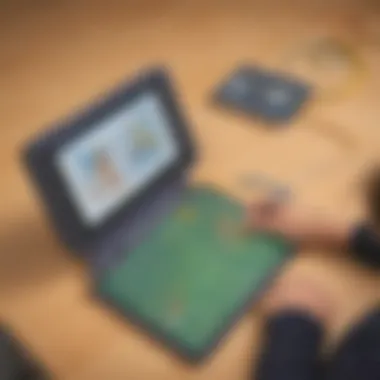
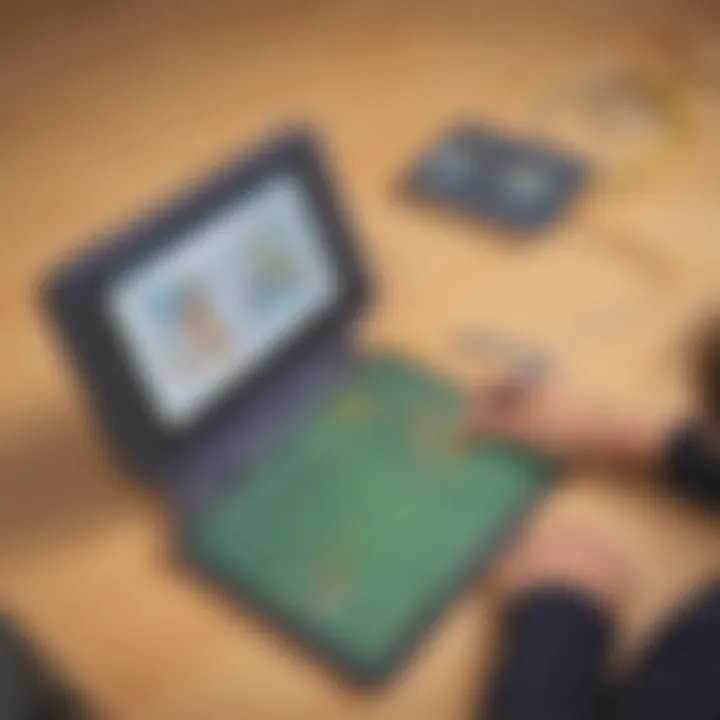
However, there can be downsides. Prolonged screen time might be a concern for some parents and educators. Balancing the use of technology with traditional methods might be the best way forward.
Fitness Tracking Applications
Fitness tracking applications are a modern twist on encouraging physical activity. These apps can monitor children's activities, set goals, and turn fitness into a fun competition. With features such as step tracking and video logs, children can take ownership of their physical health and be inspired to stay active.
- Key Characteristic: Goal-setting capabilities. Children can compete against themselves or friends, which enhances their motivation.
- Why It’s Beneficial: Such apps frequently promote family or peer involvement, creating a supportive environment.
But watch out for overemphasis on metrics; fostering a positive relationship with movement is crucial. Balance is key in ensuring this technology is an aid, not a crutch.
Printable Lesson Plans
Printable lesson plans serve as a foundation for structured learning in physical education. These resources often come with detailed guidelines outlining objectives and activities, making it easier for teachers to plan effectively. Having a physical copy allows for easier references without the distractions of digital devices. When plans are well-constructed, even complex concepts can be simplified, allowing for clear communication of expectations to students. Moreover, they foster consistency across different classes or sessions, which can be essential for tracking progress.
Equipment and Props for PE
Physical education isn’t just about moving; it’s also about the right equipment. A well-equipped classroom or playground can make all the difference in engaging children and facilitating various activities.
Essential Gear for Outdoor Activities
Outdoor PE activities require specific gear to ensure safety and promote a range of physical challenges. Elements such as balls, ropes, and cones can transform a simple game of tag into a multifaceted learning experience.
- Key Characteristics: Versatile and durable. Outdoor equipment is often designed to withstand rough play while being capable of multiple uses.
- Why It’s Popular: It encourages outdoor play, which is essential in a world where kids are increasingly sedentary.
However, it requires careful storage and maintenance so that it lasts longer and remains safe to use. Regular check-ups can prevent accidents.
Classroom-Friendly Equipment
Not all PE can happen outdoors. Classroom-friendly equipment like yoga mats, small balls, or resistance bands allows for movement even in restricted spaces. These items encourage exercise without needing large areas and can be crucial for rainy days or indoor activities.
- Key Characteristic: Space-efficient. Such equipment can be stored easily and used in various classroom settings.
- Why It’s a Beneficial Choice: It promotes physical activity regardless of weather, ensuring continuity in engaging students.
Yet, classroom space limitations can pose challenges. Teachers should plan accordingly to avoid clutter while maintaining accessibility.
Designing an Engaging PE Curriculum
Creating an engaging physical education curriculum is crucial to not just meet the educational standards but also to inspire children’s love for physical activity. When young learners find joy in movement, it becomes a lifelong pursuit. An effective curriculum is like a well-oiled machine. It needs clear objectives, a variety of activities, and some measure of adaptability to ensure every child finds their niche.
Setting Learning Goals
Learning goals serve as guideposts for a PE curriculum, helping educators map out the skills and knowledge they want their students to achieve. These goals should be Specific, Measurable, Achievable, Relevant, and Time-bound (SMART). This clarity assists teachers in designing lessons that meet not only educational standards but also the interests of the students.
For example, rather than simply aiming for children to learn how to play basketball, a SMART goal might be, "By the end of the semester, each student will be able to successfully make five consecutive free throws in game conditions.” Goals like this give educators a concrete objective to work towards, which ultimately enhances student enthusiasm and performance.
Incorporating Variety into PE Activities
Keeping things fresh is essential in PE. Variety not only maintains momentum but also caters to the diverse interests of students. Here’s how different types of activities can enhance a physical education curriculum:
Team Sports
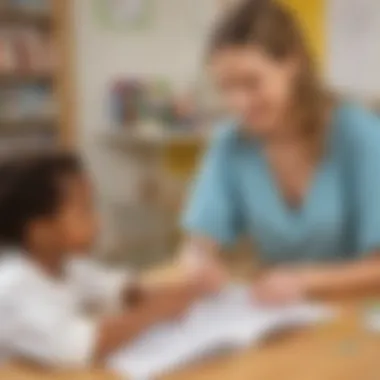
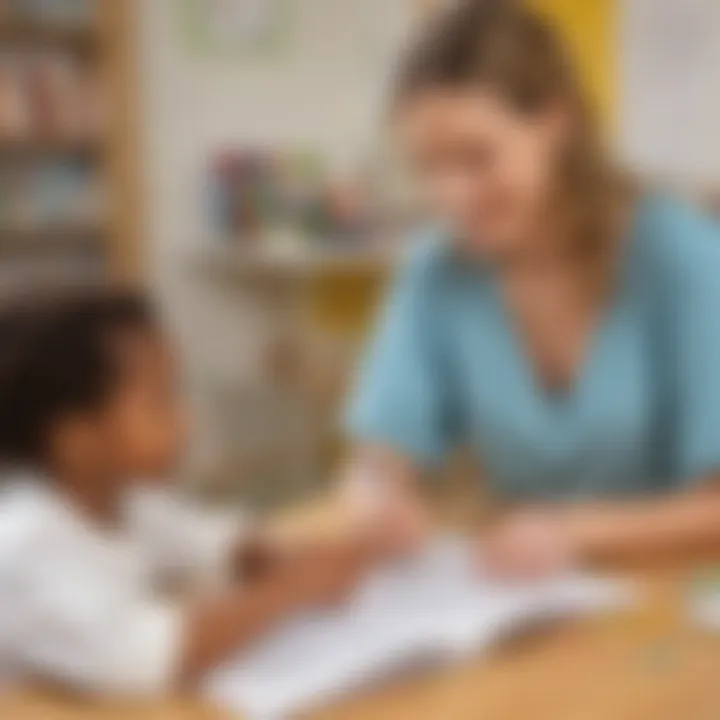
Team sports like soccer or basketball foster a sense of camaraderie and teamwork. These sports enable children to build social skills that are essential both on and off the field. A key characteristic of team sports is their collaborative nature, which teaches kids to rely on each other and work toward shared goals.
The excitement of competition may boost engagement significantly, making it a popular choice among educators. Moreover, it lays the groundwork for healthy competition and respect for diverse abilities and strategies. However, one must note that kids might feel left out if not chosen in teams. Thus, teachers must ensure to involve every participant, perhaps by rotating roles or breaking up into smaller groups.
Individual Challenges
In contrast, individual challenges such as track and field events or personal fitness goals allow students to focus on their personal progress. The key here is self-assessment and improvement. Students can set and reach milestones at their own pace. This flexibility typically attracts a subset of students who might feel overshadowed in team sports. Moreover, working alone can cultivate a sense of independence. However, that said, it is vital to ensure that competition does not create undue stress, as not every child will have the same level of ability or motivation.
Creative Movement Activities
Creative movement activities, such as dance or improvisational play, invite children to express themselves while also developing their physical skills. These activities explore movement in an imaginative way, encouraging kids to enjoy the process rather than focusing solely on outcomes. The unique feature of this approach is that it taps into children’s innate creativity, which can enhance emotional well-being as well. Besides being fun, creative movement can also foster cultural appreciation as diverse dance forms or ethnic games are introduced. However, one challenge might be that some children may feel shy or uncomfortable. Educators should create supportive environments that encourage participation without pressure.
Aligning with National Standards
Aligning your curriculum with national standards is not just about meeting expectations; it's about ensuring a consistent quality of education. These standards often encompass essential elements like motor skills, cooperative play, and understanding the health benefits of physical activity. By adhering to these benchmarks, educators can effectively gauge student progress and curriculum effectiveness. Constantly keeping an eye on these standards helps teachers to not lose sight of the ultimate goal: fostering a love for movement and lifelong fitness.
In summary, designing an engaging PE curriculum requires setting clear learning goals, diversifying activities, and aligning with recognized standards. Each component plays a vital role in nurturing a well-rounded education, ultimately inspiring children to embrace physical activity in their daily lives.
Strategies for Effective PE Instruction
Implementing effective strategies in physical education (PE) is crucial for fostering a positive learning environment. These strategies pave the way for not just enhancing physical skills, but also nurturing social connections and building emotional strength among children. With PE being such a foundational component of childhood development, ensuring that the instruction methods resonate with the young audience is imperative. The best strategies promote engagement, inclusivity, and self-awareness while ensuring every child finds their place in the realm of fitness.
Active Learning Techniques
Active learning techniques are a cornerstone of effective PE instruction. These methods advocate for student involvement in their own learning process, rather than taking a passive role. By engaging kids physically and mentally during activities, educators can create an environment where children thrive. For instance, incorporating movement-based games that require teamwork not only enhances skills but also cultivates a sense of belonging.
Activities such as 'tag games' or 'relay races' can be designed to encourage participation from all students, regardless of their skill level. The essence lies in tapping into children’s natural zest for movement, making each class a dynamic session filled with learning through play. It’s a win-win; children grow in their abilities while the educator can observe various skill progressions firsthand.
Fostering Inclusivity in PE
Inclusivity in PE is not just a buzzword; it’s a necessity. When children are included and valued in physical activities, their overall mental and emotional health flourishes. Strategies that promote inclusivity involve adapting activities so that everyone, irrespective of ability, can participate and feel successful. For example, modifying traditional games to accommodate varying skill levels can significantly impact students’ confidence and eagerness to engage.
Creating an inclusive atmosphere often starts with educators modeling acceptance and adaptability, but it also involves peer interactions. Encouraging students to support one another fosters a community spirit, which can lead to long-lasting friendships outside of the gym. Challenging all students to contribute in ways that align with their strengths helps cultivate respect and understanding among different abilities. This practice helps children realize that every contribution holds value in the collective experience.
Assessment and Feedback Methods
Assessment and feedback are fundamental avenues for guiding improvement in PE. They provide insight into how well children are grasping skills and concepts introduced in class. Educators who implement structured assessment techniques can better tailor their lessons to meet the needs of their students while fostering a growth mindset.
Formative Assessment Techniques
Formative assessment techniques focus on monitoring student learning to provide ongoing feedback. This might include observations during activities, informal quizzes related to skills or techniques, and even student self-reflection sessions. The key characteristic of these techniques is that they are continuous, allowing for adjustments in teaching methods based on immediate results.
One unique feature of formative assessment is the adaptability it offers. For example, if a teacher notices a group struggling with a particular exercise, they can easily switch up their approach, breaking it down further or employing new strategies that resonate more with the learners. This flexibility makes formative assessment a popular choice since it keeps children engaged and motivated without the pressure of traditional grading.
Utilizing Student Feedback
Utilizing student feedback is another vital component of effective PE instruction. Gathering insights from kids about their experiences helps provide perspective on what works and what doesn’t from their viewpoint. The key characteristic of this method is its student-centric approach, fostering a sense of empowerment among young learners.
Children can offer invaluable suggestions regarding the types of activities they enjoy or find challenging. Implementing their feedback can shape future lessons, making them more relevant and appealing. A key advantage of this approach is enhancing engagement—when students feel heard, they are more likely to participate actively and positively. However, it requires a teacher to be open to constructive criticism, which might be an adjustment. All in all, fostering dialogue with students is enormously beneficial in creating a tailored learning experience.
Evaluating PE Teaching Resources
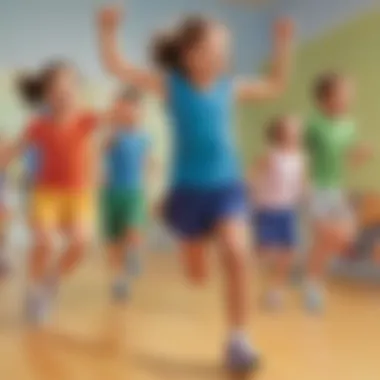
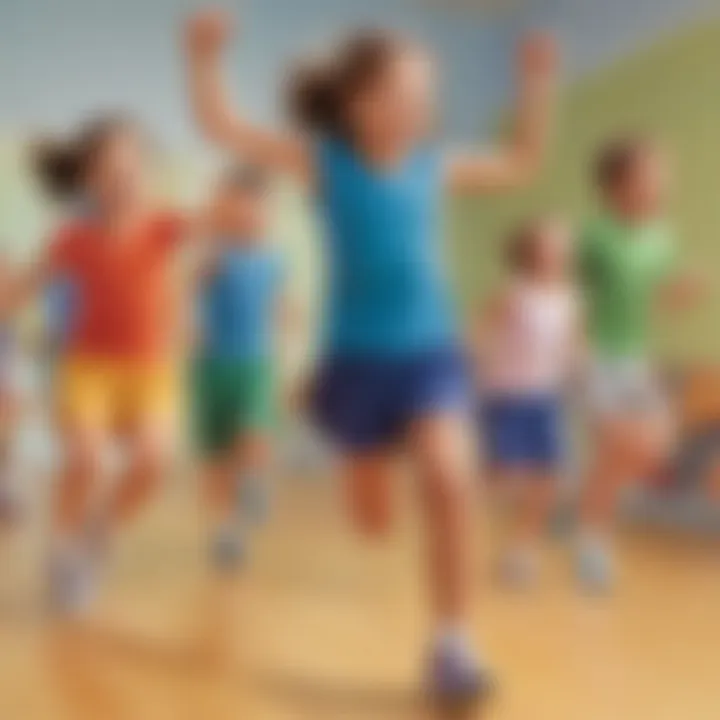
Evaluating teaching resources for physical education isn’t just a box to check off; it’s a cornerstone of crafting an effective PE curriculum. As educators and caregivers dive into the treasure trove of available materials, it's crucial to ensure that these tools are not only suitable but also impactful in fostering children's physical literacy and overall well-being. Understanding what makes a resource effective, valuable, and adaptable can substantially influence how students engage with PE.
This section covers essential criteria for selecting appropriate resources, methods for analyzing their effectiveness, and ways to adapt these resources to meet diverse needs. Each element plays a vital role in creating a dynamic physical educational environment, ultimately boosting the learning experience for children.
Criteria for Resource Selection
When selecting teaching resources, several criteria must be taken into consideration:
- Align with Educational Standards: Resources should resonate with national and state standards for physical education, ensuring they fulfill necessary learning goals.
- Age Appropriateness: Ensure that materials are suitable for the specific age group being taught. What engages a three-year-old may daze a twelve-year-old.
- Inclusivity: Select tools that accommodate various student needs, including those with physical disabilities or different learning styles.
- User-Friendliness: Resources should be easy for both teachers and students to use. If it takes longer to figure out how to use a resource than to use it, it’s time for a reevaluation.
- Variety and Flexibility: A good selection comprises diverse activities that can adapt to different settings, be it indoors or outdoors, and can cater to varying levels of physical skill.
By focusing on these criteria, educators can curate a set of resources that not only teaches physical skills but also fosters an environment of enjoyment and participation among students.
Analyzing the Effectiveness of Resources
Taking a closer look at how resources perform in real-world settings is essential. Here are some methods to gauge their effectiveness:
- Feedback from Students: Gather students' opinions on what they enjoy and what challenges them most. This direct insight can illuminate which resources resonate and motivate.
- Observation: Watch how engaging different materials are during class activities. Are kids actively participating? Or do they seem confused or uninterested? Observation can speak volumes about a resource's effectiveness.
- Performance Improvement: Track progress in students’ physical skills over time. Are they improving in strength, coordination, or endurance? If not, it might be worth reassessing the resources being used.
=> "A resource is only as good as its ability to get students moving and learning. If they’re not engaged, it’s time to change the playbook."
Adaptation of Resources for Different Needs
Adaptability is key in a varied classroom setting. Here’s how to tailor PE resources to cater to different students:
- Modify Activities: Some kids might struggle with certain tasks. Adjust the complexity or intensity of activities to make them attainable and enjoyable for all.
- Use Alternative Materials: If a child can’t use typical equipment, find alternatives—like using foam balls for throwing exercises instead of standard balls.
- Peer Assistance: Encourage students to work in pairs or small groups, allowing stronger participants to help those who may need extra support.
- Multi-Level Challenges: Design activities that can be scaled up or down based on ability. This manner keeps everyone involved, making PE a shared experience rather than a segregated one.
Building a Community Around PE
Creating a vibrant community around physical education (PE) is not just beneficial but necessary. This section underscores its significance in enhancing children's active lifestyles and nurturing lifelong healthy habits. When families, educators, and community members work together, it cultivates an environment that encourages children to engage in physical activities both in and out of the classroom. This holistic approach not only enriches the learning experience but also supports emotional, social, and physical development.
Engaging Parents and Caregivers
Engaging parents and caregivers in the PE process plays a crucial role in reinforcing what children learn in school. These adults hold the powerful key to sustaining children's interest in active lifestyles after school hours. Organizing informational sessions can help parents understand PE goals and the importance of physical activity. This way, they can actively support their children’s efforts.
- Communication: Keeping lines of conversation open between educators and families provides updates on children's progress. Newsletters or dedicated social media groups can be platforms to share successes, tips, and resources.
- Involvement in Activities: Inviting parents and caregivers to participate in activities, like family fitness nights or community sports events, can create a sense of unity. When parents participate, it shows children that being active is important.
“When parents show enthusiasm for physical activities, children are likely to mirror that excitement.”
Collaborating with Local Organizations
Building partnerships with local organizations can significantly enhance PE initiatives. Communities often boast a variety of resources that can bring fresh energy and creativity into PE curriculums.
- Sports Clubs and Gyms: Collaborations with local sports clubs can provide children with access to trained coaches and specialized sports programs, helping them develop new skills.
- Health and Wellness Organizations: Partnering with health organizations can introduce educational workshops on nutrition and physical fitness. This way, children learn the relationship between what they eat and how they move.
Engaging in these partnerships can create opportunities for extra-curricular PE activities, field trips, and events that emphasize the importance of staying active.
Promoting Active Lifestyles Beyond the Classroom
To instill a love for physical activity, it’s essential to promote active lifestyles beyond the classroom walls. Educators and caregivers should be mindful of how they encourage children to stay active in everyday life.
- Community Events: Encourage participation in local fun runs, sports leagues, or group fitness classes designed for families. These events not only promote health but also offer a sense of belonging in the community.
- Active Play: Supporting unstructured playtime in parks or backyards aids in developing motor skills and creativity. Parents should be encouraged to create spaces conducive to active play.
Ultimately, fostering a culture that emphasizes moving, playing, and engaging after school cultivates habits that can last a lifetime.
By uniting families, schools, and community organizations, we lay the groundwork for a healthier, more active society, where physical education is rewarded as a vital aspect of life.















